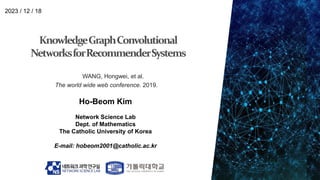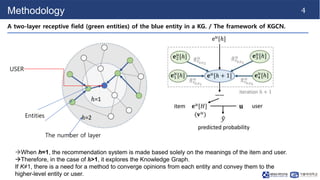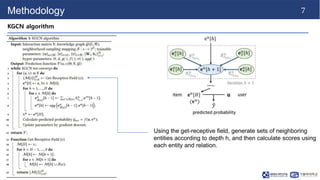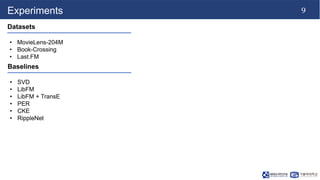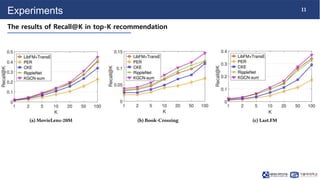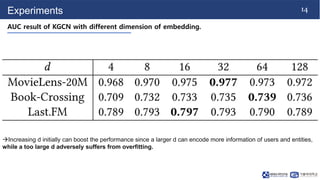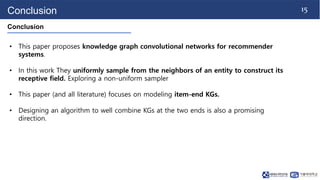1. The authors propose a recommendation system using a Knowledge Graph (KG) to learn interactions between users and items. A graph convolutional network is employed to explore the KG and identify higher-order relations of interest to users.
2. The approach demonstrates superior performance on real datasets compared to traditional collaborative filtering and other baselines. It considers relationships between users, items, and the entities items are part of to infer meanings and learn from the KG.
3. The method uses a receptive field approach over the KG, sampling neighboring entities to generate sets to perform convolutional operations on. This allows exploration of the KG to different depths.
